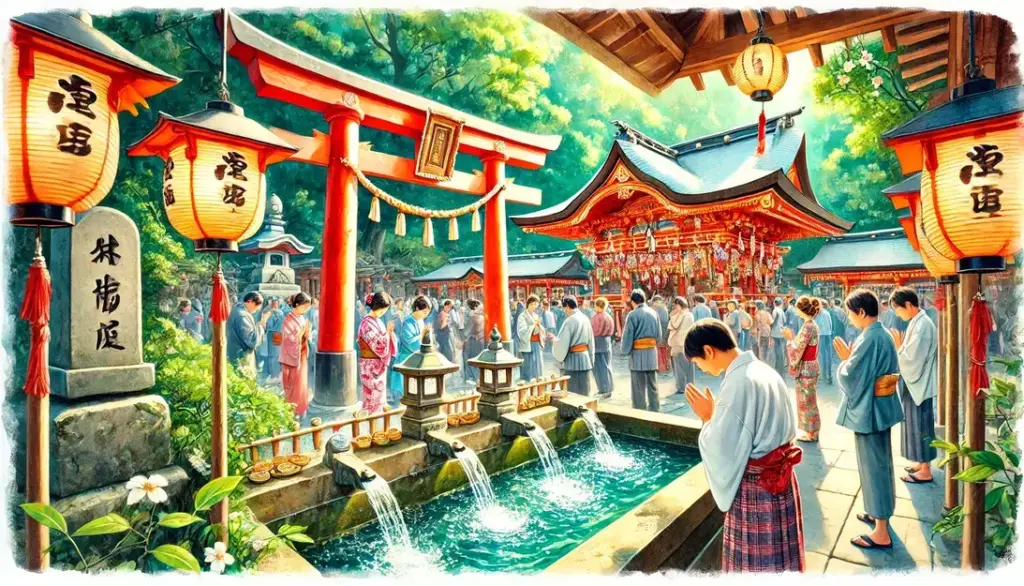Visiting a Shinto shrine in Japan is a fascinating glimpse into the country’s deep-rooted traditions. Shrines are sacred spaces where people connect with deities, seek blessings, or express gratitude. The process of praying may seem complex at first, but it’s surprisingly simple when you know the steps. In this guide, you’ll learn the significance of these rituals, from cleansing at the entrance to offering heartfelt prayers. Whether you’re visiting out of curiosity or devotion, understanding the customs will make your visit meaningful and respectful.
Understanding Shinto Shrines in Japan
Visiting a Shinto shrine is not just about stepping into a sacred space; it’s about immersing yourself in a centuries-old tradition. These shrines bridge the human and spiritual worlds, embodying respect, reverence, and connection. Before learning how to pray at a Shinto shrine in Japan, it’s essential to understand its foundation and key features.
What is Shinto?
Shinto is an indigenous Japanese belief system deeply rooted in nature and community. At its core lies the concept of Kami—sacred spirits or deities. Kami can inhabit anything: majestic mountains, flowing rivers, ancient trees, or even human-made objects. They are not gods in the Western sense but rather spiritual forces that guide and influence life.
Shinto emphasizes harmony between humans and nature, encouraging respect for all living things. Shrines are constructed to honour Kami, offering a space for communication, gratitude, and seeking blessings. People often turn to Shinto during important milestones like births, weddings, or even New Year celebrations. Want to dive deeper? Learn more about Shinto beliefs and Kami.
Key Features of a Shinto Shrine
Shrines may vary in size and design, yet they all share common features that highlight Shinto rituals and beliefs. Here are some key elements to look for during your visit:
- Torii Gate
A Torii is the iconic red or wooden gate marking the boundary between the everyday world and the sacred space of the shrine. Walking through the Torii symbolizes purification and reverence. You’ll often find multiple Torii gates, such as at the famous Fushimi Inari Shrine in Kyoto, where they form visually stunning pathways.
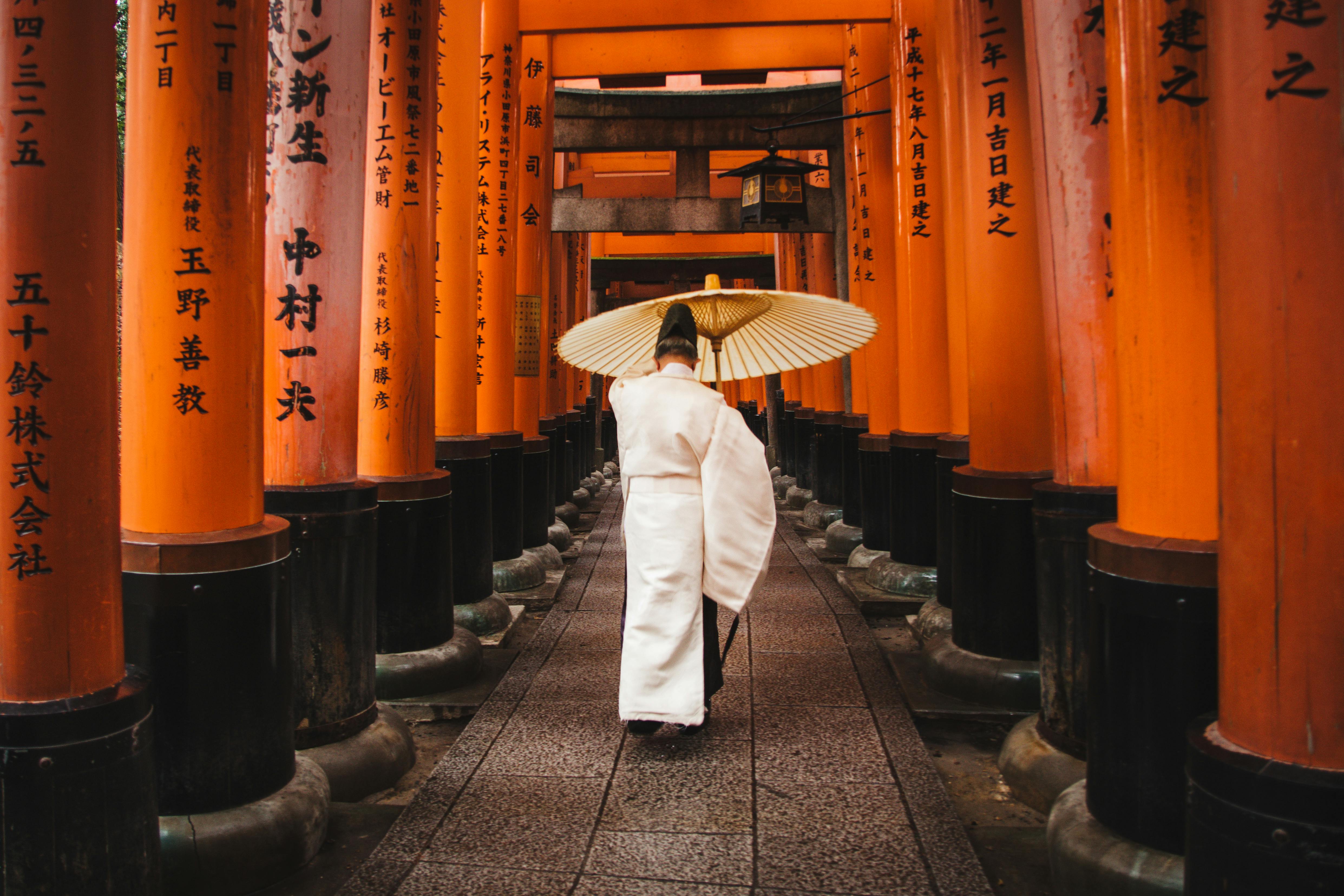
Photo by DSD
- Purification Fountain (Chozuya)
Before approaching the main hall, you’ll encounter the Chozuya—a stone basin filled with water. This is where visitors perform the purification ritual, cleansing their hands and mouth to prepare for their prayers. Think of it like resetting your inner energy before speaking to the divine. - Main Hall (Honden)
The Honden is the heart of the shrine, housing the revered Kami. You cannot enter the Honden itself, as it is considered too sacred. Instead, you’ll find an offering box and often a bell, used during prayer rituals. Offer your respect through symbolic actions like bowing, clapping, and praying.
Want an overview of shrine architecture and its role in Shinto practices? Check this guide to Shinto shrines and their features.
Preparing for Your Visit
When you visit a Shinto shrine in Japan, a bit of preparation can make your experience smoother and more respectful. From your attire to your behavior, paying attention to details ensures a meaningful and respectful visit.
What to Wear and Bring
When visiting a sacred place like a Shinto shrine, wearing modest, neat clothing shows respect. While there isn’t a strict dress code, remember that you’re entering a spiritual space. Avoid overly revealing outfits, such as tank tops or short shorts. Instead, opt for loose, breathable fabrics, especially in warmer months.
If you’re uncertain, here are a few good guidelines for outfits:
- Choose clothing that covers your shoulders and knees.
- Avoid wearing items with bold or inappropriate graphics.
- Comfortable shoes are essential since you’ll do a lot of walking.
You’ll also want to bring some small change, as offering a coin is custom. Coins such as a 5-yen piece (believed to bring good fortune) are often dropped into the offering box. Don’t worry if you don’t have one; any coin will suffice. Carrying a small handkerchief or towel might also be useful, especially if you plan to purify yourself at the fountain.
For more tips on what to wear, consider checking out this guide on shrine fashion and etiquette.
Understanding Shrine Etiquette
Shrine etiquette is simple yet important for respecting the space and other visitors. As you step through the Torii gate, bow slightly to acknowledge the transition to sacred ground. Stay centred in your thoughts, but not in your steps—on shrine pathways, it’s customary to walk along the sides, leaving the centre path open for Kami.
Here are key points to remember for your behaviour:
- Stay quiet and serene. This is a place for reflection, not selfies or loud conversations.
- Always bow lightly when entering or leaving main areas as a token of respect.
- Avoid touching or leaning on sacred structures, as it’s considered impolite.
Before reaching the main shrine hall, you will come across the purification fountain or Chozuya. Use the ladles provided to cleanse yourself by rinsing your hands and mouth. Think of it as a symbolic way to wash away distractions, preparing your spirit for prayer.
For more insight into proper shrine behaviour, read this etiquette guide.
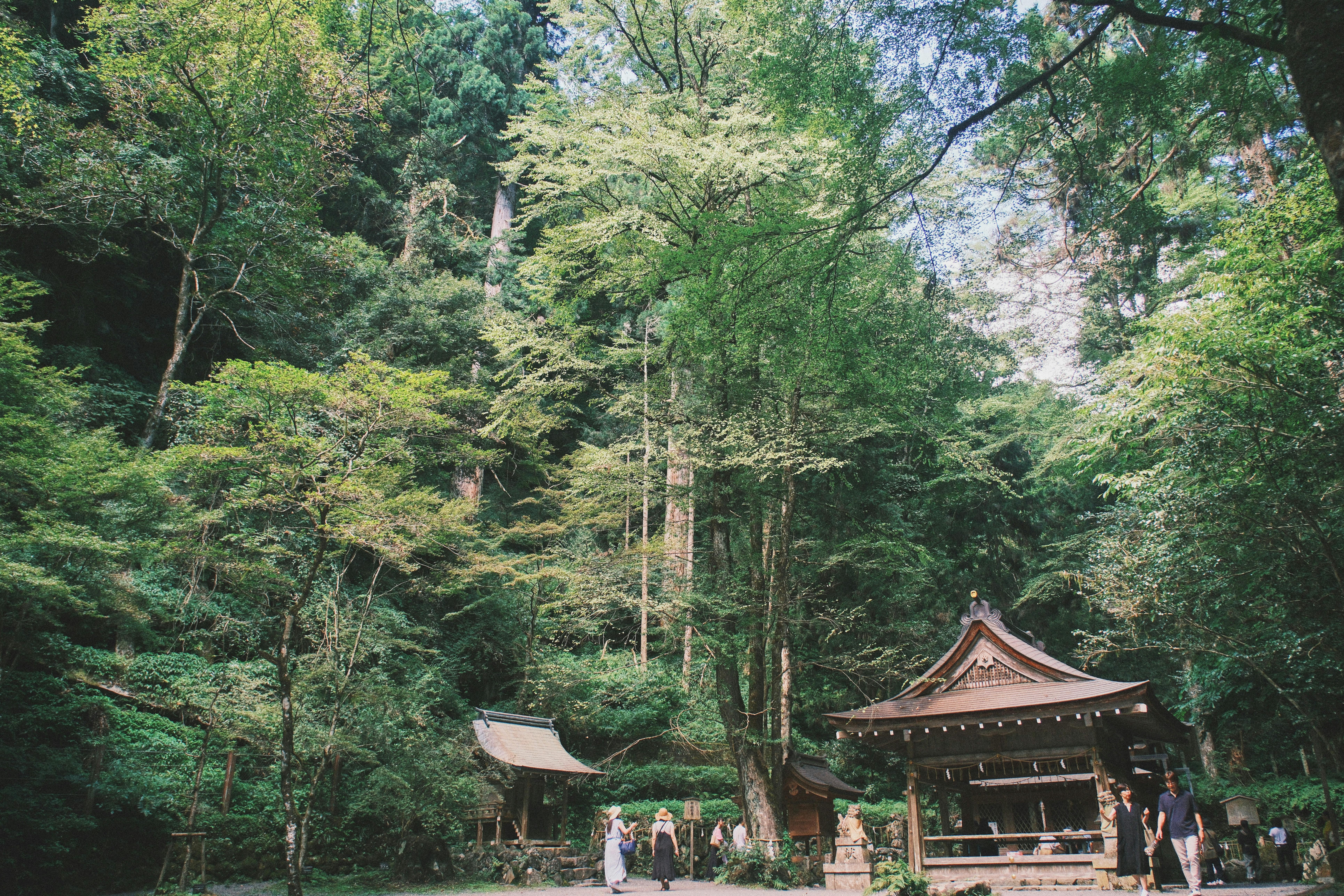 Photo by L M
Photo by L M
By preparing thoughtfully and understanding the customs, you’ll show respect and deepen your appreciation for the sacred experience.
Step-by-Step Guide: How to Pray at a Shinto Shrine
Praying at a Shinto shrine in Japan is a meaningful experience. It showcases the spiritual connection between people and nature. To pray respectfully, follow these easy steps.
Step 1: Entering Through the Torii Gate
The Torii gate marks the entrance to the sacred grounds. It’s more than just a structure; crossing it symbolizes leaving the ordinary world behind and stepping into a spiritual space.
- As you approach the Torii gate, stop to bow lightly before passing through. This gesture shows gratitude and respect.
- Refrain from walking in the center of the pathway under the gate. That area is reserved for the Kami (deity).
This small ritual helps set the tone for the rest of your visit. It’s a way to pause, reflect, and prepare for the sacred experience ahead.
Step 2: Purifying Yourself at the Chozuya
After entering the shrine, you’ll encounter the Chozuya or purification fountain. This step ensures you’re spiritually clean before approaching the shrine.
Here’s how to perform the purification ritual:
- Take the ladle with your right hand and scoop water.
- Pour water over your left hand.
- Switch hands and cleanse your right hand.
- Pour some water into your left hand and rinse your mouth (don’t drink directly from the ladle!).
- Clean the ladle handle by letting the remaining water run down it.
Think of this process as clearing your mind and body of daily distractions. It’s a simple but important way to honor the Kami.
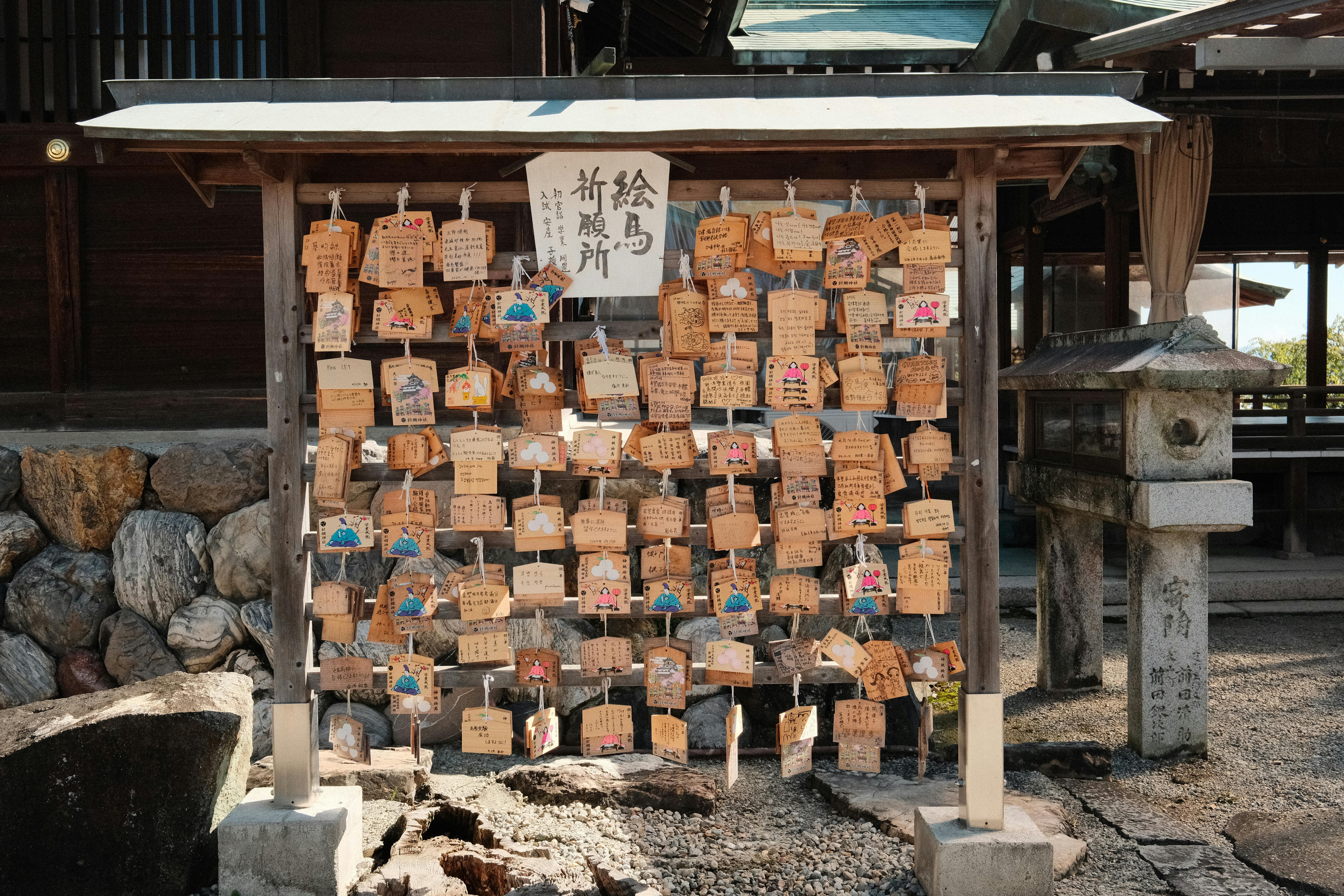
Photo by Huu Huynh
Step 3: Approaching the Main Hall
Now that you’re purified, walk quietly towards the main hall, or Honden, with a respectful demeanor. Avoid rushing or making unnecessary noise.
- Toss a small coin (commonly 5-yen for good fortune) into the offering box.
- If there’s a bell, ring it gently to signal your presence to the Kami. Think of it as saying, “I’m here and ready to pray.”
Respect and mindfulness are key here. Walking calmly and preparing your heart before praying makes the moment more heartfelt.
Step 4: The Prayer Ritual
Now comes the heart of the visit: the prayer itself. Follow this traditional four-step ritual:
- Bow deeply twice.
- Clap your hands twice. This action draws attention from the Kami and symbolizes unity.
- Pray silently. Close your eyes, place your hands together, and express gratitude, ask for blessings, or reflect.
- Bow deeply once more to conclude.
This ritual demonstrates respect and creates a connection between you and the sacred spirit.
Step 5: Exiting Respectfully
As you leave the shrine, express gratitude one last time.
- When exiting through the Torii gate, turn and bow lightly toward the shrine grounds. This final bow is a way of saying thank you for the experience.
Leave with the same calm and respect you entered with. This completes your spiritual moment and shows the utmost respect for the sacred space.
For more helpful guidance on Shinto practices, check out this how-to guide by Awaji Island Tourism.
Special Customs and Traditions
At Shinto shrines, prayer is not the only way to engage in a spiritual experience. Visitors can participate in several meaningful customs that deepen their connection with the deities and reflect personal hope. These traditions help create a unique, personalized shrine experience.
Ema: Writing Wishes on Wooden Tablets
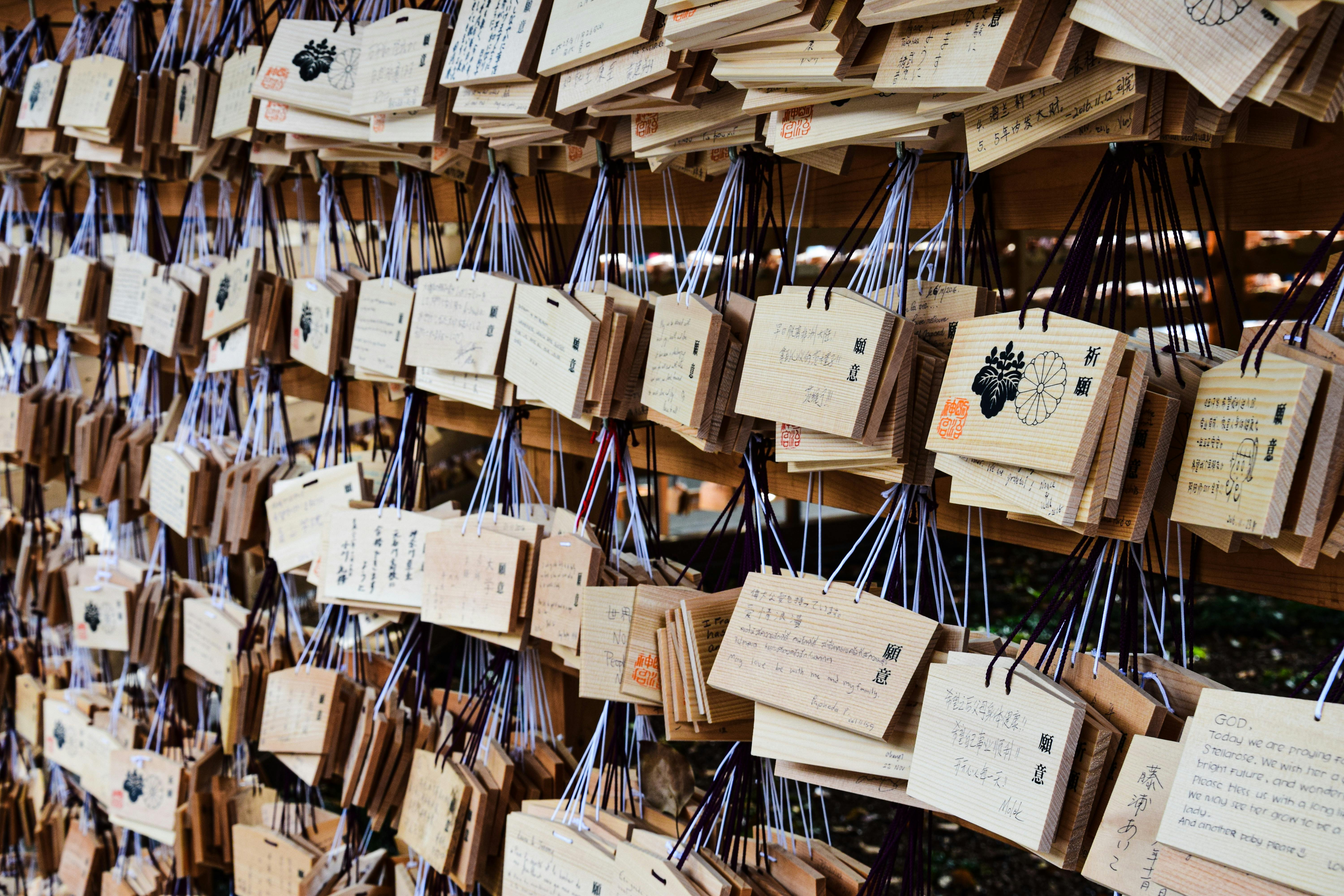
Photo by AXP Photography
Ema are small wooden tablets used to jot down personal wishes or prayers. Upon entering a Shinto shrine, you may notice clusters of these colorful plaques tied onto racks or walls. People write their wishes directly onto one side of the plaque, often asking for success, health, or love. After finishing, the Ema is hung at the shrine, symbolizing the act of sharing these hopes with the Kami.
Each shrine can have uniquely designed Ema, featuring themes tied to the shrine’s deity or region. Whether you’re fluent in Japanese or not, anyone can partake. Don’t worry about writing the perfect message—it’s your intent that matters most. Interested in the history behind ema rituals? Read more about Ema traditions here.
Omamori: Protective Amulets
Omamori are small, beautifully crafted pouches imbued with spiritual blessings. They’re designed to protect or bring luck in different aspects of life, such as health, education, or traffic safety. You’ll typically find them available for purchase at the shrine. If something is troubling you—be it exams, business, or family—you can seek the corresponding Omamori to carry as a symbol of hope and spiritual protection.
Make sure to keep your Omamori in a safe place, like your bag or wallet. The charm itself should remain unopened, as this is believed to preserve its divine power. Looking to learn about the role of Omamori in Japanese culture? Visit this Omamori guide.
Omikuji: Fortune Slips
When visiting a Shinto shrine, testing your luck with Omikuji can be an exciting experience. Omikuji are fortune slips drawn at random, offering predictions about different aspects of life such as health, love, and career. To participate, simply drop a small donation in the collection box, shake the designated container, and pull out a numbered stick. This number corresponds to your fortune slip, which you can retrieve based on the shrine’s instructions.
Your fortune may range from “Great Blessing” (Dai-Kichi) to “Great Curse” (Dai-Kyo). If it’s favorable, you can keep it in your wallet or somewhere special. If it’s unfavorable, there’s a custom to tie it to a designated rack or tree at the shrine to “leave the bad fortune behind.” Want to better understand Omikuji? Check out this comprehensive guide on Omikuji tradition.
These traditions, from offering wishes to protecting oneself with charms and checking fortunes, offer physical ways of engaging with the spiritual nature of Shinto practices. They add a deeply personal touch to your shrine visit.
Common Mistakes to Avoid
When visiting a Shinto shrine in Japan, small missteps can unintentionally show disrespect to traditions and beliefs. To ensure your visit is meaningful and aligned with local customs, here’s a guide to avoid common mistakes.
Misusing the Chozuya
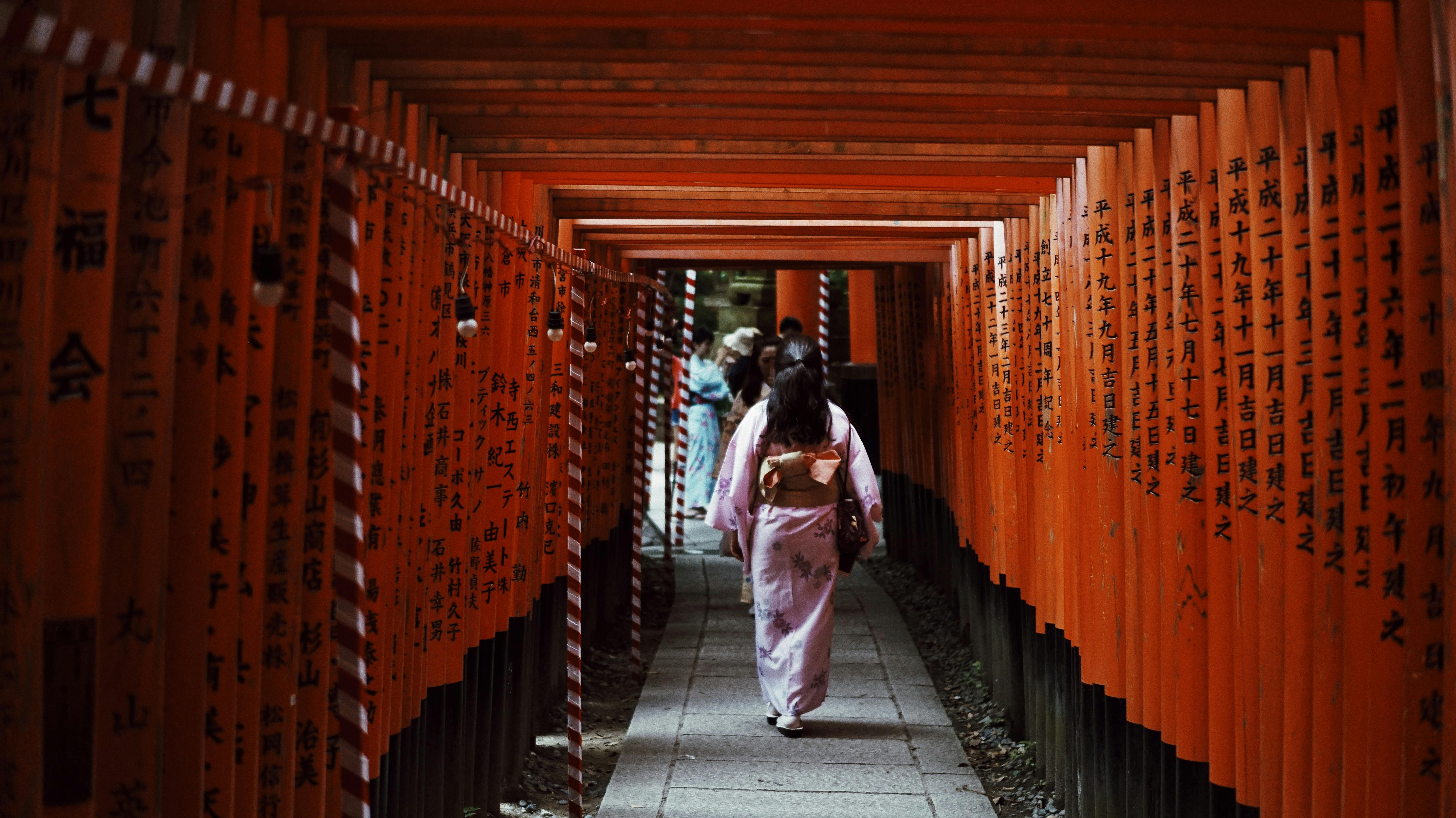
Photo by Mat Kedzia
The Chozuya, or purification fountain, is one of the first steps in entering a sacred state. However, many visitors skip this or perform it incorrectly.
What to Avoid:
- Do not scoop water directly into your mouth; this is seen as unhygienic and disrespectful.
- Avoid splashing water around or playing with the ladle—it’s not a toy.
Use the water and ladle calmly and follow the proper steps. This ritual is about preparing your mind and soul for the divine experience ahead. Want to learn how to purify yourself properly? Check out this guide to shrine etiquette.
Breaking Silence or Acting Disrespectfully
Shrines are serene spaces meant for reflection and worship, not casual chatter or entertainment. Sometimes, visitors fail to appreciate this sacred atmosphere.
Actions to Avoid:
- Speaking loudly or laughing within the shrine grounds.
- Running, playing, or taking inappropriate selfies in sacred areas.
Think of the shrine as a library of the spirit—calm, quiet, and contemplative. Respect the solemn energy of the environment, which allows others to connect with their prayers as well. Here’s a helpful etiquette guide to shrines for more insights.
Walking Down the Center of the Path
In Shinto tradition, the center of shrine paths symbolizes a sacred road for the Kami, or deities. Walking in this space is akin to stepping into someone else’s reserved lane.
Key Things to Remember:
- Always walk on the sides of pathways.
- Be mindful of your surroundings and allow space for others.
This small but significant gesture shows both spiritual and cultural respect. By staying to the side, you honor the Kami and seamlessly blend into the respectful flow of visitors. For further reading on this and other shrine customs, visit this practical guide.
Understanding these common mistakes ensures you don’t unintentionally offend, while also making your visit more enriching. Follow these tips, and you’ll step into the shrine experience with confidence and respect.
Enhancing Your Experience
Visiting a Shinto shrine goes beyond rituals. It’s an opportunity to engage deeply with Japanese culture and spirituality. Whether talking to shrine staff or attending a lively festival, embracing these additional experiences can make your visit unforgettable.
Engaging with Shrine Staff or Guides
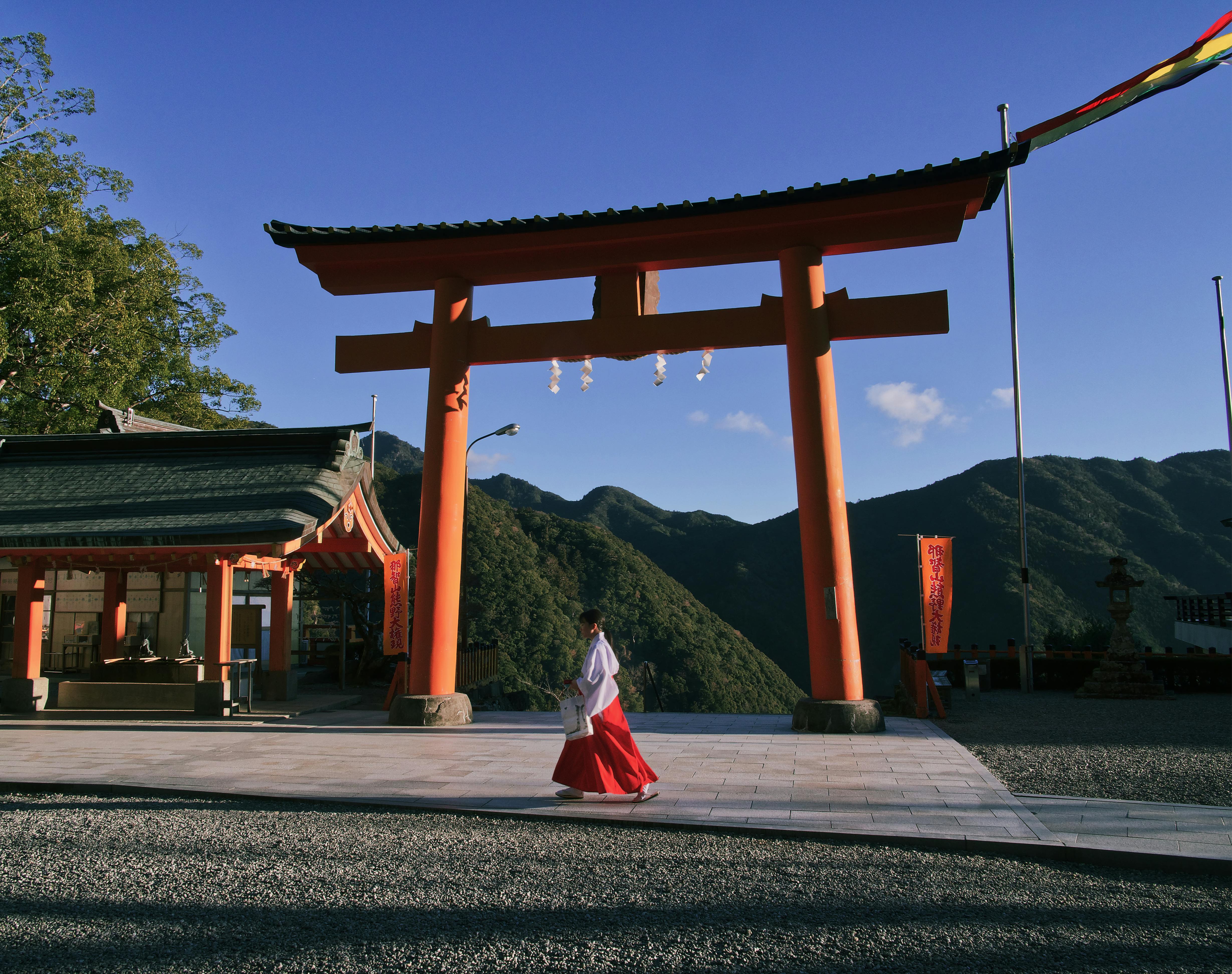
Photo by Casia Charlie
Shrine staff and guides often carry a wealth of knowledge about the site’s history, traditions, and significance. Don’t hesitate to ask questions or converse politely if you spot someone available. Many larger shrines even have volunteer guides who speak English and are happy to share insights with visitors.
Here are some helpful tips for engaging with them:
- Approach politely: Begin with a respectful greeting like “Sumimasen” (Excuse me).
- Ask specific questions: For example, inquire about the story of the shrine’s deity or the meaning behind its rituals.
- Be curious but mindful: Their time might be limited, so keep your interaction focused and concise.
Learning directly from knowledgeable individuals can add depth to your visit. Want to understand more about essential shrine customs? Visit this guide on temple and shrine etiquette.
Attending Shrine Festivals
Shrine festivals, or Matsuri, are among the most colourful ways to experience Japan’s vibrant traditions. These celebrations often include food stalls, performances, and communal rituals that bring the shrine’s customs to life. Festivals like Kyoto’s Gion Matsuri or Tokyo’s Sanja Matsuri attract thousands of visitors annually for their unique charm and energy.
What makes attending a shrine festival special?
- Local immersion: Matsuri are deeply rooted in local culture, often reflecting the area’s history and seasonal significance.
- Interactive elements: Be part of the procession, carry a portable shrine (Mikoshi), or enjoy traditional dances.
- Food and fun: Savor festival street food like takoyaki and yakitori, while enjoying games and performances.
Can’t decide which festival to attend? Explore this helpful guide to top Japanese festivals.
Attending a festival not only enriches your cultural experience but also allows you to see the communal spirit of Japanese society in action. So check the calendar and align your visit with one of these events to feel the energy and joy firsthand!
How to Pray at a Shinto Shrine in Japan? Conclusion
Praying at a Shinto shrine offers a meaningful way to connect with Japan’s traditions and spirituality. By following the proper steps—like purifying yourself, bowing, clapping, and quietly praying—you show respect to both the Kami and the culture.
Take this opportunity to reflect, find peace, and experience the harmony between humanity and nature that Shinto embodies. When visiting a shrine, your thoughtful participation creates a deeper appreciation for the customs and values it stands for.
Why not plan your next visit with these steps in mind? Respectful engagement can make your experience truly unforgettable.

